After six years of exposure to the elements, Bambino Migrante, the mural created by Banksy in May 2019 on the facade of Palazzo San Pantalon in Venice, has been secured. The project, funded by Banca Ifis, has allowed the work, 30 percent deteriorated due to humidity, salt spray and high water, to be saved. It is one of only two works by the British artist officially recognized on Italian territory. The intervention, supervised by restorer Federico Borgogni, began last June 3, 2025 and was completed on the night of July 23-24 with the detachment of the portion of the wall on which the child is depicted. The work included a preliminary phase of dust removal, surface and in-depth consolidation, surface cleaning and, finally, preparation of the detachment. The transfer to the laboratory has already taken place and the last phase of the restoration now continues.
The mural, which appeared in 2019 without any authorization, depicts a shipwrecked child submerged in the water of the Venetian Lagoon, raising a hand to call for help while holding a fuchsia signal flashlight. It is a symbolic image that recalls the theme of migration and the tragedy of children who have died in the Mediterranean Sea. Over time, the artist’s provocative gesture has generated a heated debate about the preservation of street art, which has always been conceived as ephemeral and transitory.
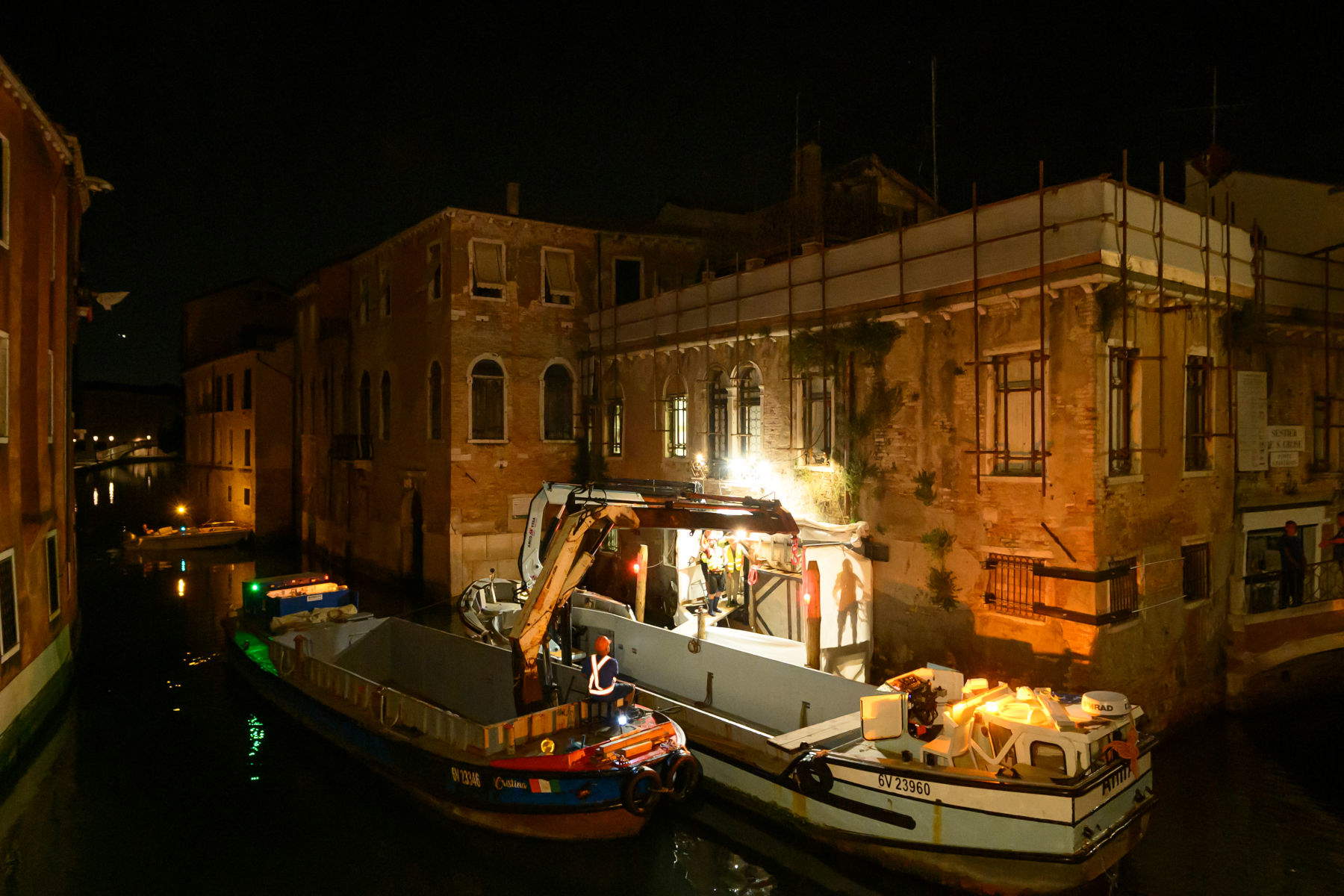
The decision to proceed with the detachment of the mural represents an exception to the usual practices in wall restoration. Classical techniques used for frescoes or mural works have not proved suitable, due to the particular nature of the surface and the technique used by Banksy. Indeed, this is an unprecedented intervention in Italy, and detachment was considered the only way to safeguard the work, which is in an increasingly critical condition. The final phase of the restoration will take place in the laboratory: the intervention will involve the removal of the compromised masonry parts, the relocation of the work on a new, more stable honeycomb support, the filling of the gaps and a pictorial reintegration performed in such a way as to keep the intervention recognizable from the original. Once the procedure has been completed, the work will once again be exhibited to the public as part of the free initiatives promoted by Ifis Art, in collaboration with the Venetian conservation authorities.
The restoration proposal had been presented in Rome in October 2023, at the Ministry of Culture, during a press conference attended by the undersecretary for Culture, Vittorio Sgarbi. It was Sgarbi himself who had promoted the operation, contacting Banca Ifis directly so that it would take on the financing. The restoration, now at an advanced stage, was thus also the result of direct intervention by the undersecretary, who urged the bank to support the project financially. The institute’s choice was part of its commitment to art and the territory, already demonstrated with the inauguration of the International Sculpture Park at Villa Fürstenberg in Mestre, where works by artists such as Fernando Botero, Philip Colbert, Igor Mitoraj and Manolo Valdés were collected.
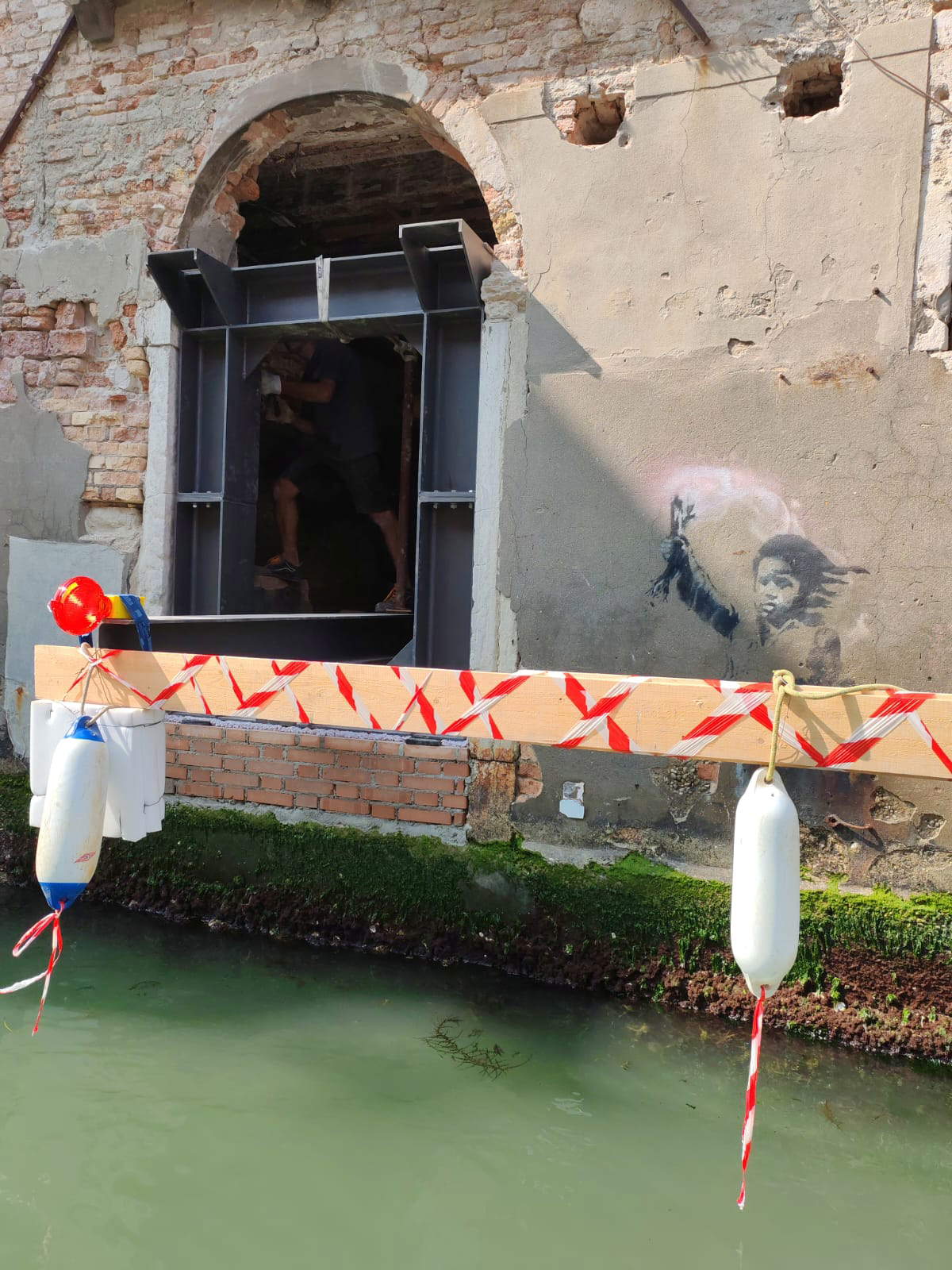
In any case, the recovery of the work had not been without controversy. In fact, in recent years, the discussion had developed around two opposing positions: on the one hand, those who had argued that the work should be allowed to decay, consistent with the ephemeral poetics of street art and the graffiti’s implicit message; on the other hand, those who had believed that, once made public, the work should be protected as part of the collective heritage. Prominent among the critics of the intervention was theVenetian Architects Association, which had expressed its dissent, stressing the symbolic value of the work’s disappearance, in analogy with the fate of the migrant children who died in the Mediterranean Sea.
"The idea behind the graffiti is that in time it will be submerged by water and will, alas, meet the same end as the many children who have died in the Mediterranean over the past ten years,“ the architects had specified. Banksy’s works, ”are in fact born to be exposed to the elements, resulting in deterioration and natural destruction. This is the meaning that also emerges from this work by Banksy, who is a political activist working to awaken the consciences, or perhaps it would be better to say the unconsciences, of the new millennium." The architects thus recalled how Banksy had conceived his works to be exposed to the elements, destined to disappear naturally over time.
On the other hand, the need to preserve an important testimony in Italy of a famous artist. And it was then on this position that subsequent interventions were oriented. Indeed, the Ministry of Culture felt it had to intervene, despite the absence of regulatory requirements that would allow direct action by the Superintendency, which is competent only on works older than seventy years.
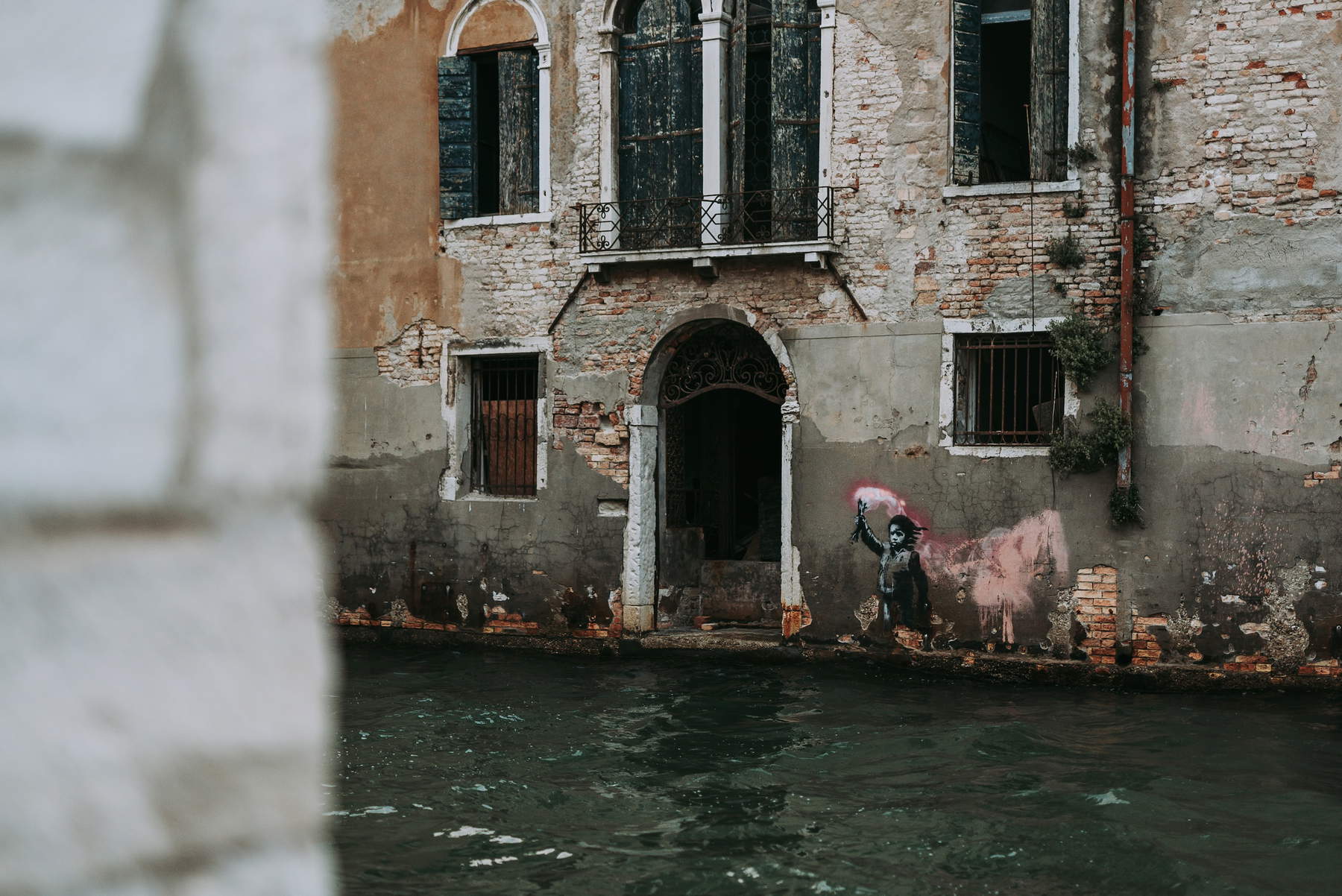
Therefore, the debate has also taken on legal significance. Bambino migrante was created on a listed building, but since it was a work by a living artist, the Superintendence could not deal with it directly. The graffiti, moreover, had been the subject of a complaint by the then superintendent of Venice, Emanuela Carpani, who had reported the action to the Public Prosecutor’s Office, likening the action to an act of vandalism against a historic building. The affair ended, as was largely predictable, with the filing of the case, while Carpani herself later signed a note in which she acknowledged an artistic interest in the work. Sgarbi from his point of view had made it clear that, according to his interpretation, the task of the Ministry was precisely to indicate a vision.
In that case, he had in fact argued the need to preserve a work that, although unauthorized, had been executed on a listed property, consequently entering the symbolic heritage of the community. For this reason, the restoration was therefore entrusted to Banca Ifis, thus filling the regulatory gap that had prevented direct intervention by the state. “Whoever acts abusively on a listed historic building,” Sgarbi argued, “cannot expect anyone to respect what he has not respected.”
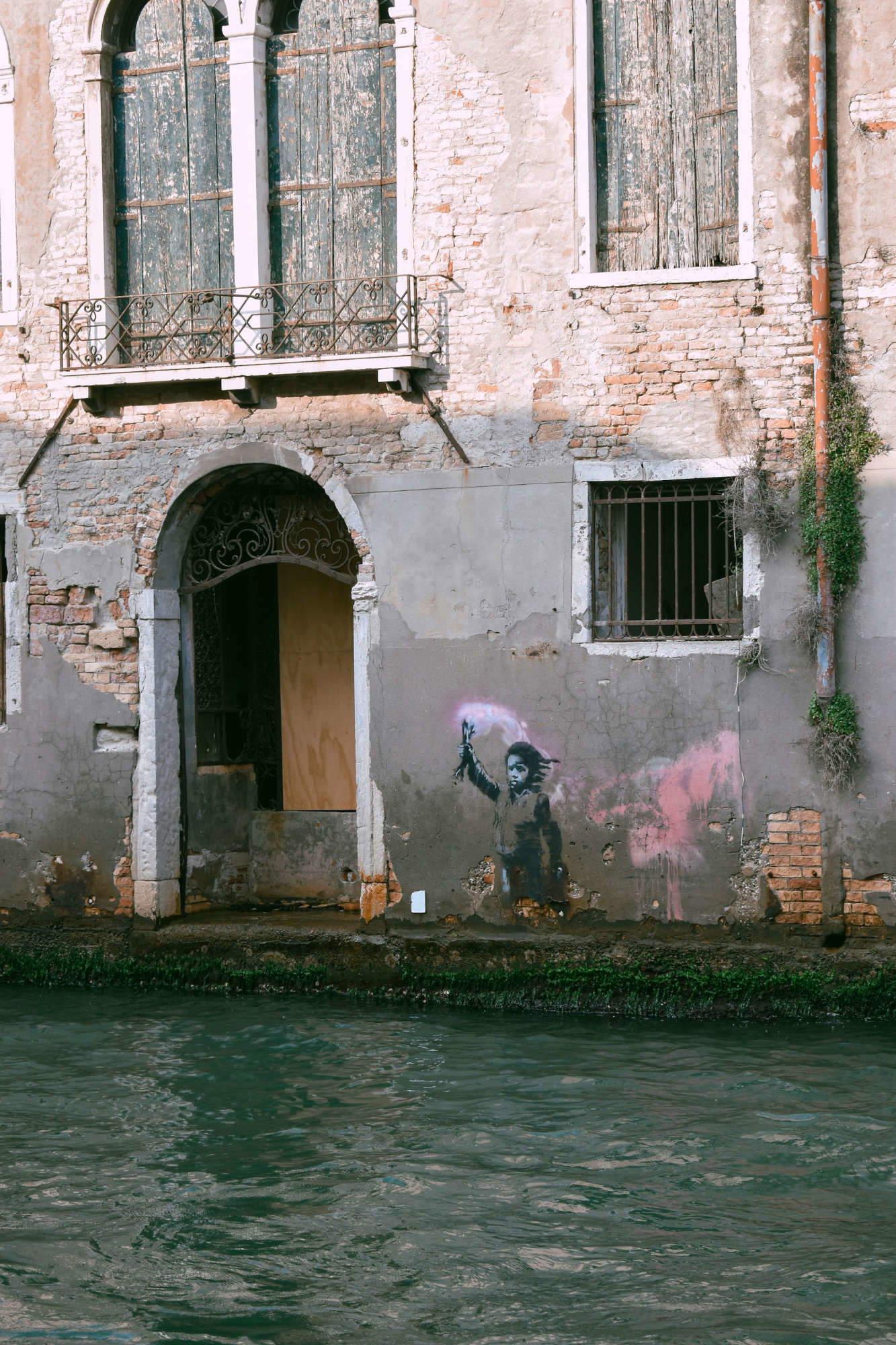
The confrontation also extended to the issue of copyright. The work was not purchased and, according to some interpretations, Banksy could have objected to the intervention. In truth, the ownership of the building, represented by lawyer Jacopo Molina, had already expressed full willingness to proceed with the restoration. The position of the Ministry, in line with what Angelo Piero Cappello, director general of Contemporary Creativity, had stated, had been that Bambino migrante had assumed a public value and should be protected within a project of urban reintegration and architectural enhancement.
From a technical point of view, the restoration required an entirely novel approach. The precarious state of preservation of the building, coupled with the presence of salts in the walls and the humidity typical of the lagoon context, therefore made it necessary to resort to tailor-made solutions. The detachment carried out, authorized within the terms provided by the Cultural Heritage Code, had been defined by former superintendent Magani as an unprecedented opportunity in the history of masonry restoration. In fact, the operation had been evaluated as extremely complex, but at the same time, according to Magani, interesting to try. In any case, once the restoration is completed, the mural could be destined for a museum venue, Sgarbi mentioned Ca’ Pesaro in Venice, while on the Campo San Pantalon building the installation of a reproduction would be considered.
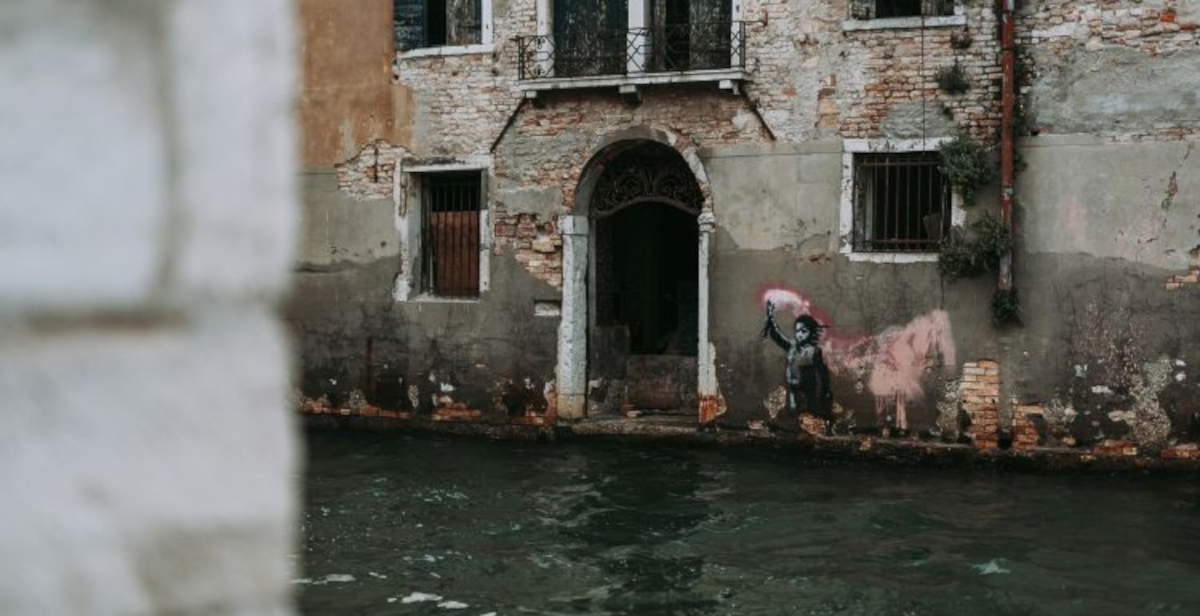 |
| The rescue of Banksy's mural in Venice has been completed |
Warning: the translation into English of the original Italian article was created using automatic tools. We undertake to review all articles, but we do not guarantee the total absence of inaccuracies in the translation due to the program. You can find the original by clicking on the ITA button. If you find any mistake,please contact us.